Best indoor hanging plants – 12 trailing houseplants for cascading, statement foliage
Ideal for small spaces – the best indoor hanging plants will create veils of lush leaves and colorful flowers without taking up valuable floor space in your home
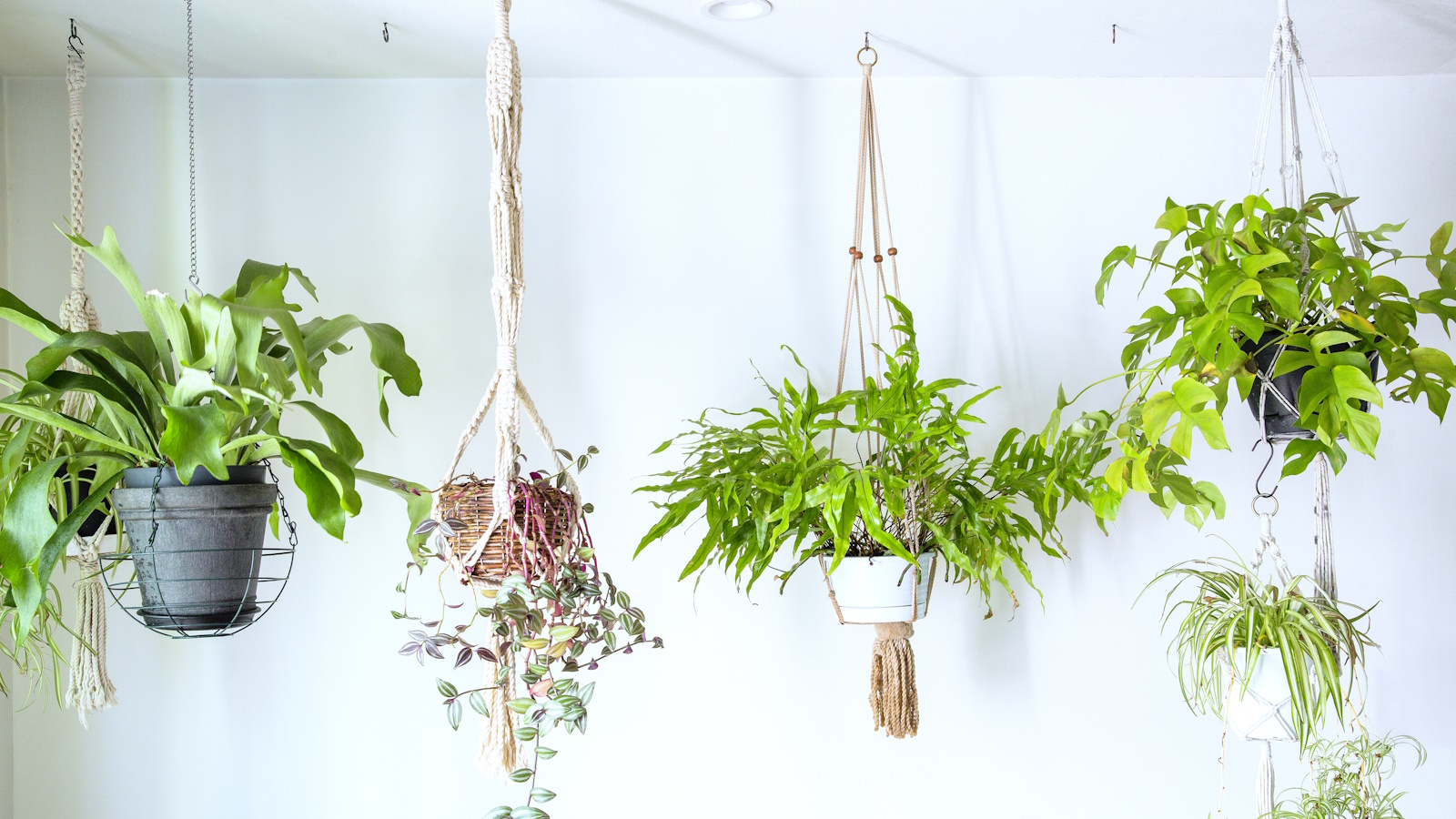
- 1. Lipstick Plant (Aeschynanthus pulcher)
- 2. String-of-Hearts (Ceropegia linearis subsp. woodii)
- 3. Spider Plant (Chlorophytum comosum)
- 4. Grape Ivy (Cissus rhombifolia)
- 5. Fishbone Cactus (Epiphyllum anguliger)
- 6. Devil’s Ivy (Epipremnum aureum)
- 7. Rose grape (Medinilla magnifica)
- 8. Mistletoe cactus (Rhipsalis baccifera)
- 9. Donkey’s tail (Sedum burrito; Sedum morganianum)
- 10. String-of-beads (Senecio rowleyanus)
- 11. Christmas cactus (Schlumbergera)
- 12. Silver-inch Plant (Tradescantia zebrina)
- FAQs

Choosing the best indoor hanging plants for your interior will give your houseplant displays a new dimension. Leafy vines and trailing stems of flowers add a touch of the tropics to interior designs with layers of texture and color.
Remember to check the light levels needed for each choice and place plants that need sun closest to the window, with the shade-lovers further back or near a north-facing window. You can even use different plant stands to place trailing plants at different heights or try your hand at kokedama for a different trailing look.
Some of the best indoor plants can grow quite big, and trailing plants will restrict your movement if hung in the center of a room or hallway, so position these around the edges of your space so they won’t get in the way.
Smaller trailing plants, such as fishbone cactuses or spider plants, can be used to create a candelabra effect over a dining table or sideboard while threading strings of small LED lights through the plant stems or shining a spotlight up into the foliage will create a beautiful shadow play in the evenings.
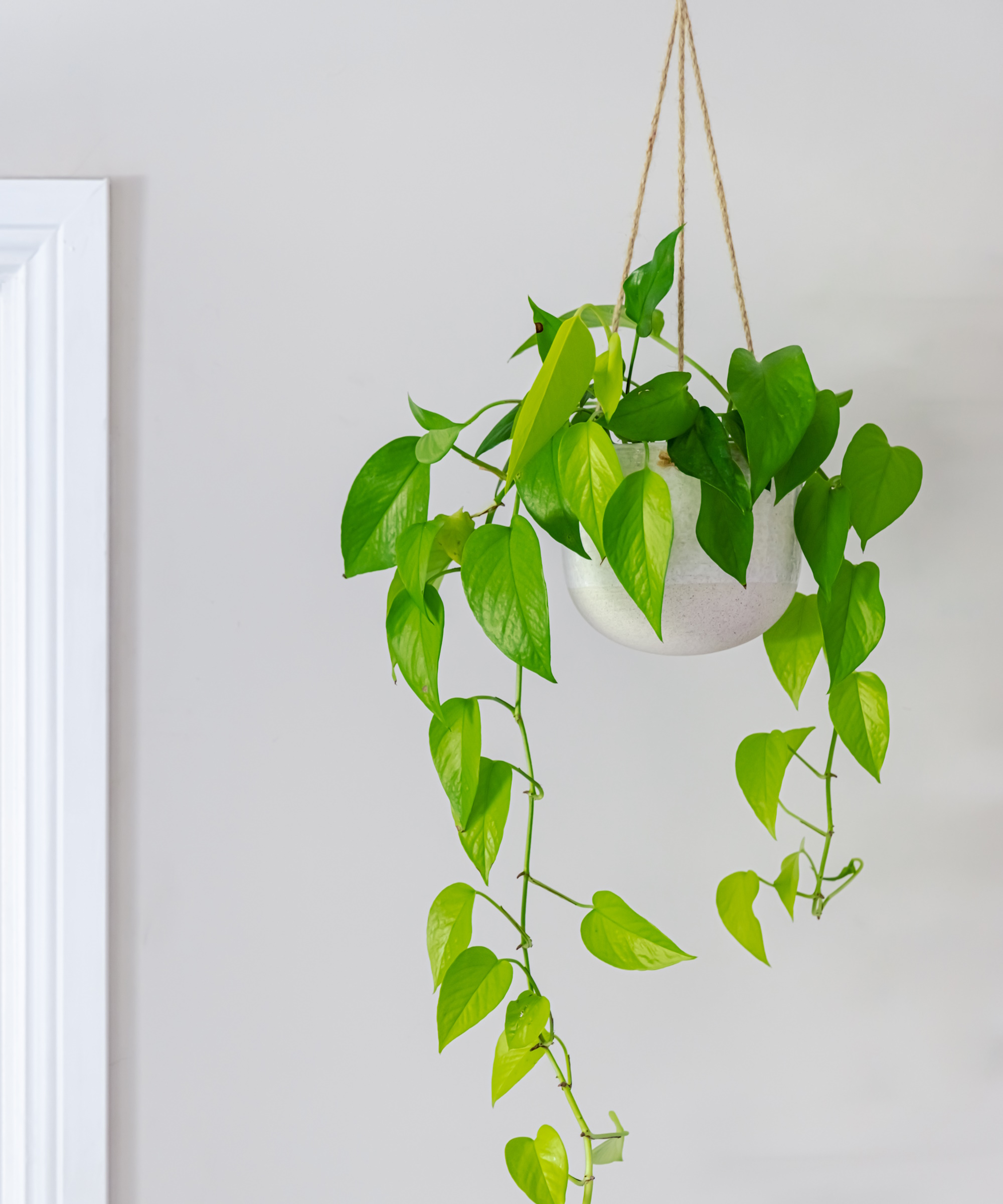
Create stunning displays with the best indoor hanging plants
Maximize the space in your home by displaying the best indoor hanging plants up high. Whether you hang them from the ceiling, allow them to trail down from a shelf, or display them in an on-trend hanging planter, there are plenty of ways to make your trailing houseplants a striking focal point in your space and add another dimension to your indoor garden ideas. You can even try growing these plants on a houseplant trellis.
1. Lipstick Plant (Aeschynanthus pulcher)
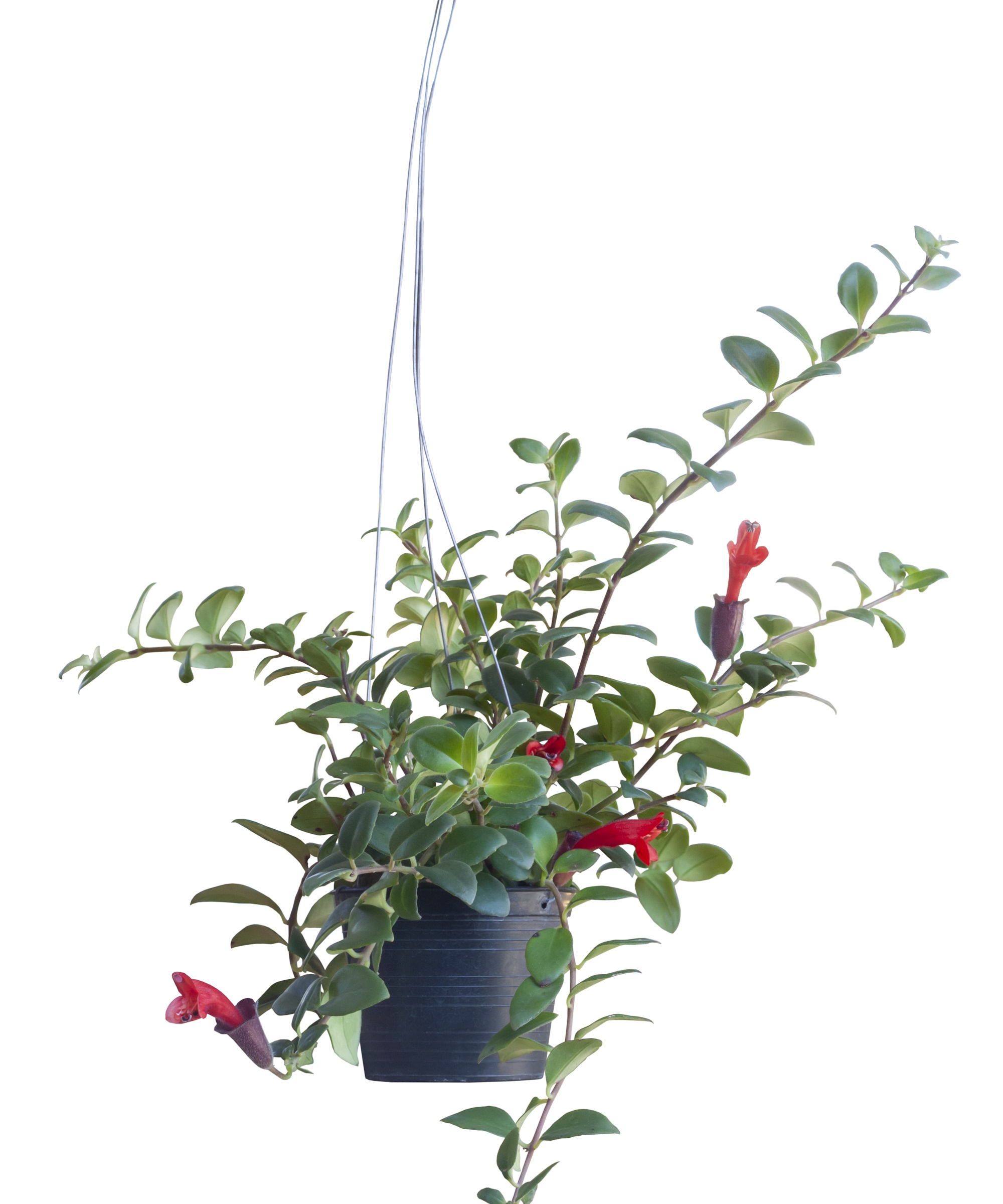
During the summer and fall, this striking plant produces bright red tubular flowers that emerge from darker cases like little lipsticks, hence its common name. For the rest of the year, the cascading stems of glossy green leaves, which can grow to about 28in (70cm) in length, will provide plenty of interest for your indoor garden ideas.
Hang your plant in a bright position, away from direct sun, and water when the top of the compost feels dry – keep even drier in winter. Mist the foliage every few days and apply a half-strength balanced liquid fertilizer once a month in spring and summer. This mini variegated variety of lipstick plant is available to order online at Walmart.
2. String-of-Hearts (Ceropegia linearis subsp. woodii)
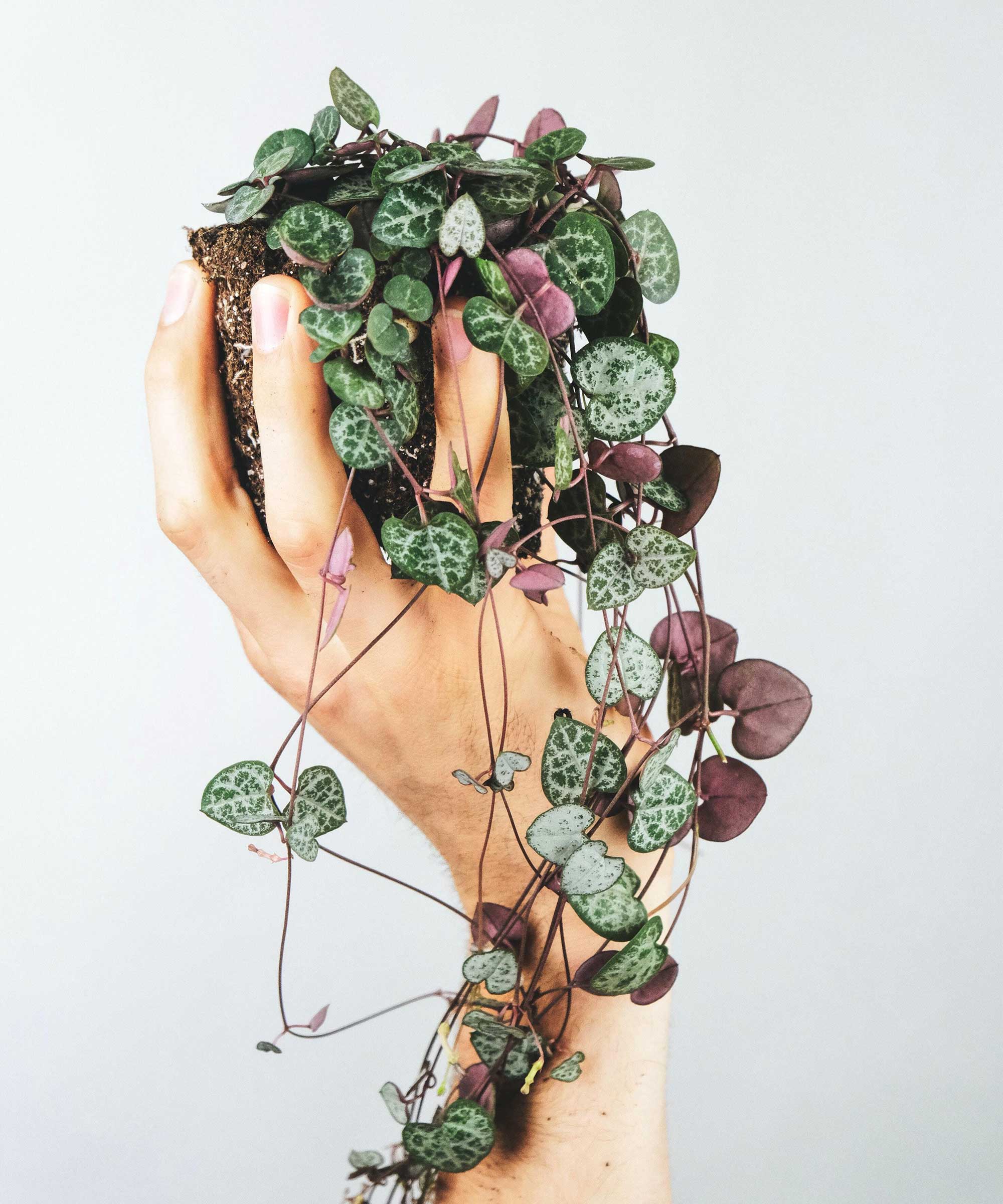
Long, thread-like stems dotted with tiny green and cream heart-shaped leaves, purple beneath, will twinkle like Christmas decorations as they catch the sun. Pink and purple tubular flowers add to the show in summer. String-of-hearts is one of the best low-maintenance indoor plants as it's very easy to grow, requiring little water and almost no irrigation over winter.
You can give it a half-strength balanced liquid fertilizer once a month in spring and summer but it will sail on regardless if you forget. Display it in a sunny room where the long stems, which can reach over 6ft (1.8m), will not trail on the floor.
Rachel Bull, Head of Gardens on Homes & Gardens, says clustering lots of these plants together can make a serious botanical statement. 'I love these trailing plants with their gorgeous heart-shaped leaves, so when I was looking for new lighting in my kitchen, I decided to opt for large, contemporary chandeliers within which I could plant lots of string-of-hearts in a huge mass. The effect is heavenly, and adds a tropical feel to the dining area in the kitchen,' she says.

Rachel is a gardening writer, flower grower and floral designer. Her journalism career began on Country Living magazine, sparking a love of container gardening and wild planting. After more than a decade writing for and editing a range of consumer, business and special interest titles, Rachel became editor of floral art magazine The Flower Arranger.
3. Spider Plant (Chlorophytum comosum)
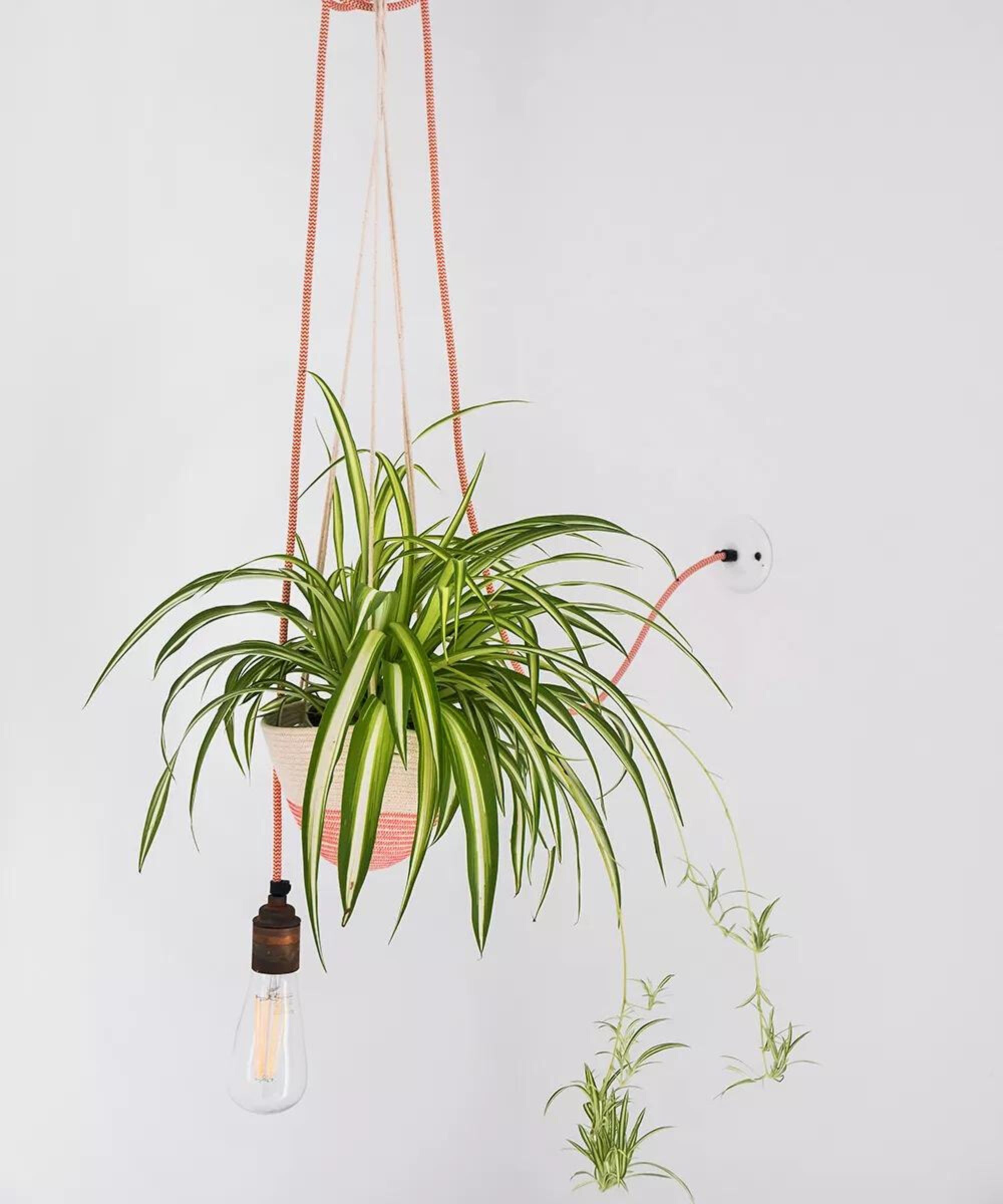
With its graceful fountain of green and white striped leaves and baby plantlets dancing on slender, arching stems, the spider plant is a must-have addition to any indoor plant ideas.
When it comes to the best indoor hanging plants, this is also one of the easiest to care for, thriving on neglect and happy in filtered sun or shade. Water it when the top of the compost feels dry and apply a balanced liquid fertilizer once a month from spring to autumn to keep it in peak condition.
This leafy plant grows to about 1x2ft (30x60cm) in height and length, and is best displayed where the baby ‘spiders’ can form a skirt around the mother. The baby plants can be propagated to get more free houseplants.
4. Grape Ivy (Cissus rhombifolia)
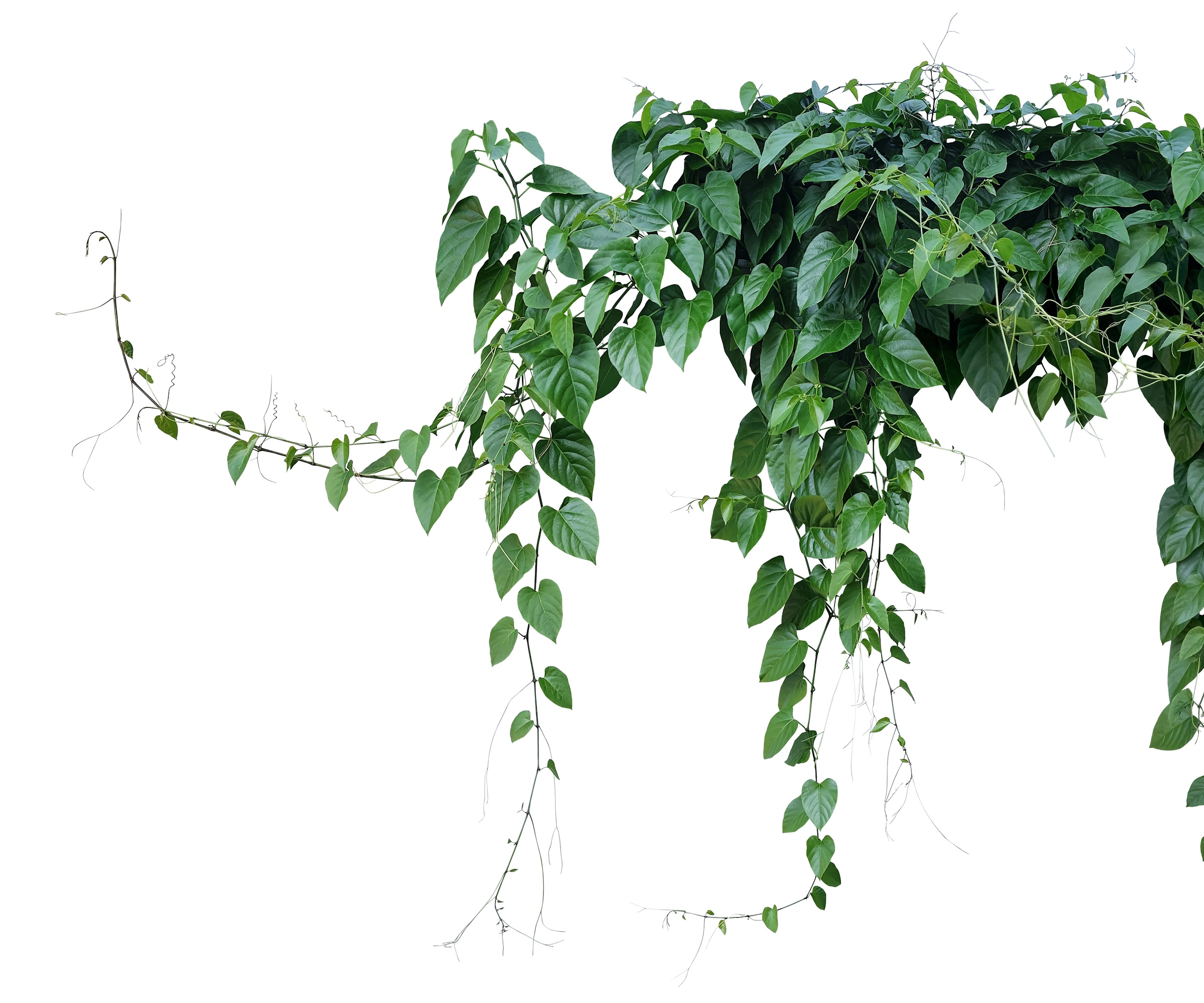
The long stems of glossy lobed green foliage lend a jungly look to a bright or lightly shaded room, and will either cascade down from a hanging basket or twine around horizontal wires to cover a wall. The leaves also have a silvery sheen when young, creating a two-tone effect as they emerge, and the stems will grow to about 6ft (1.8m) in length.
Apply a balanced liquid fertilizer once a month and keep the compost moist from spring to autumn – reduce watering and feeding slightly in winter. Trim back overly long stems in spring.
5. Fishbone Cactus (Epiphyllum anguliger)
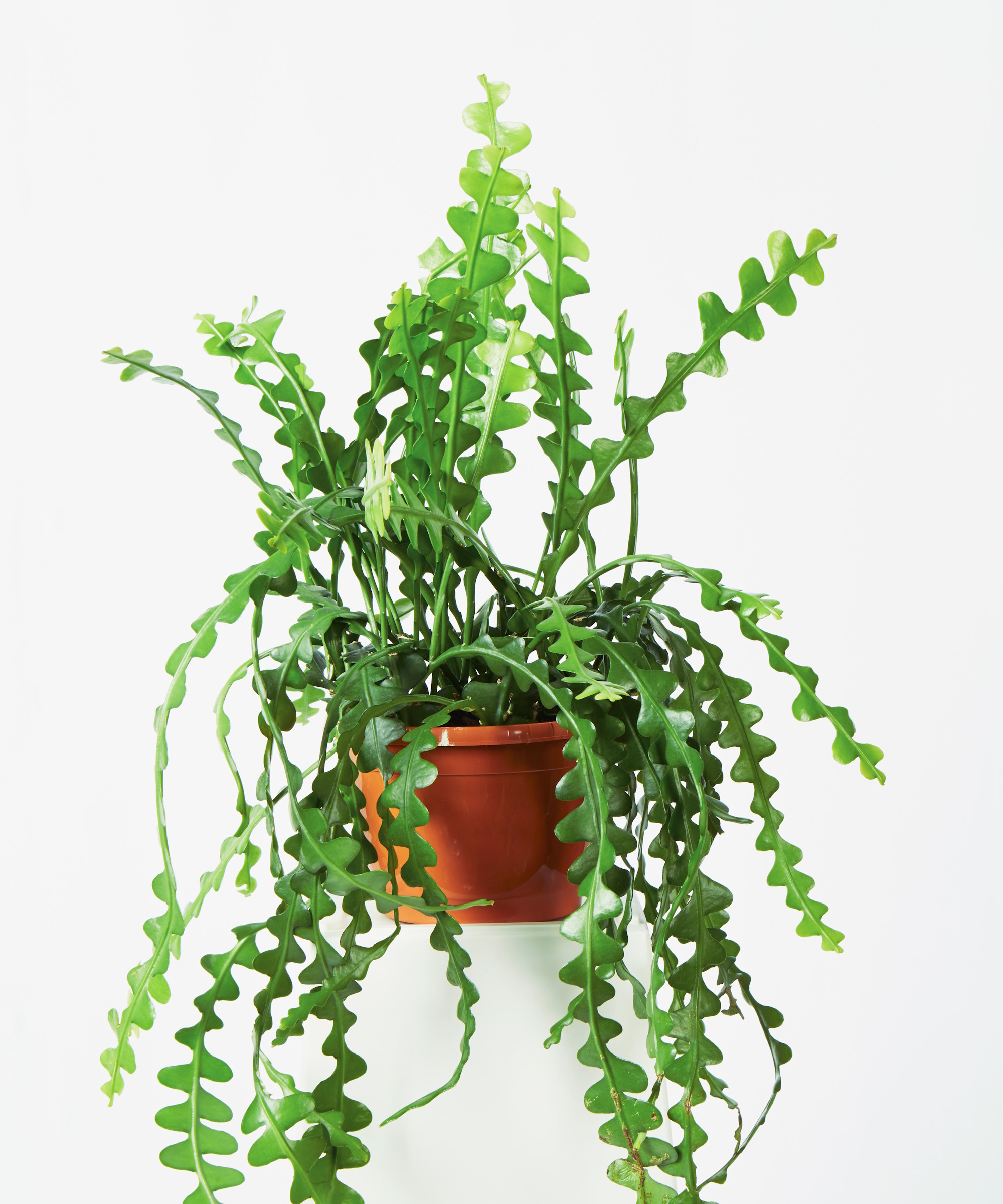
This eye-catching plant produces trailing wavy-edged leaves that look like fishbones – its other common name is the zigzag plant – and reach about 12in (30cm) in length. In fall, scented white flowers appear, followed by edible green fruits that taste a bit like gooseberries. It is also one of the best pet-safe plants you can grow indoors.
Unlike desert cacti, this plant is from the rainforest and is happiest in a bright position out of direct sun or even a little shade. From early spring to fall, water it when the top of the compost is dry, soaking the plant thoroughly over a sink so that it’s wet but never becomes waterlogged.
Keep the compost just moist in winter. Apply cactus fertilizer fortnightly during spring and summer. A range of fishbone cactus plants are available to buy from Walmart.
6. Devil’s Ivy (Epipremnum aureum)
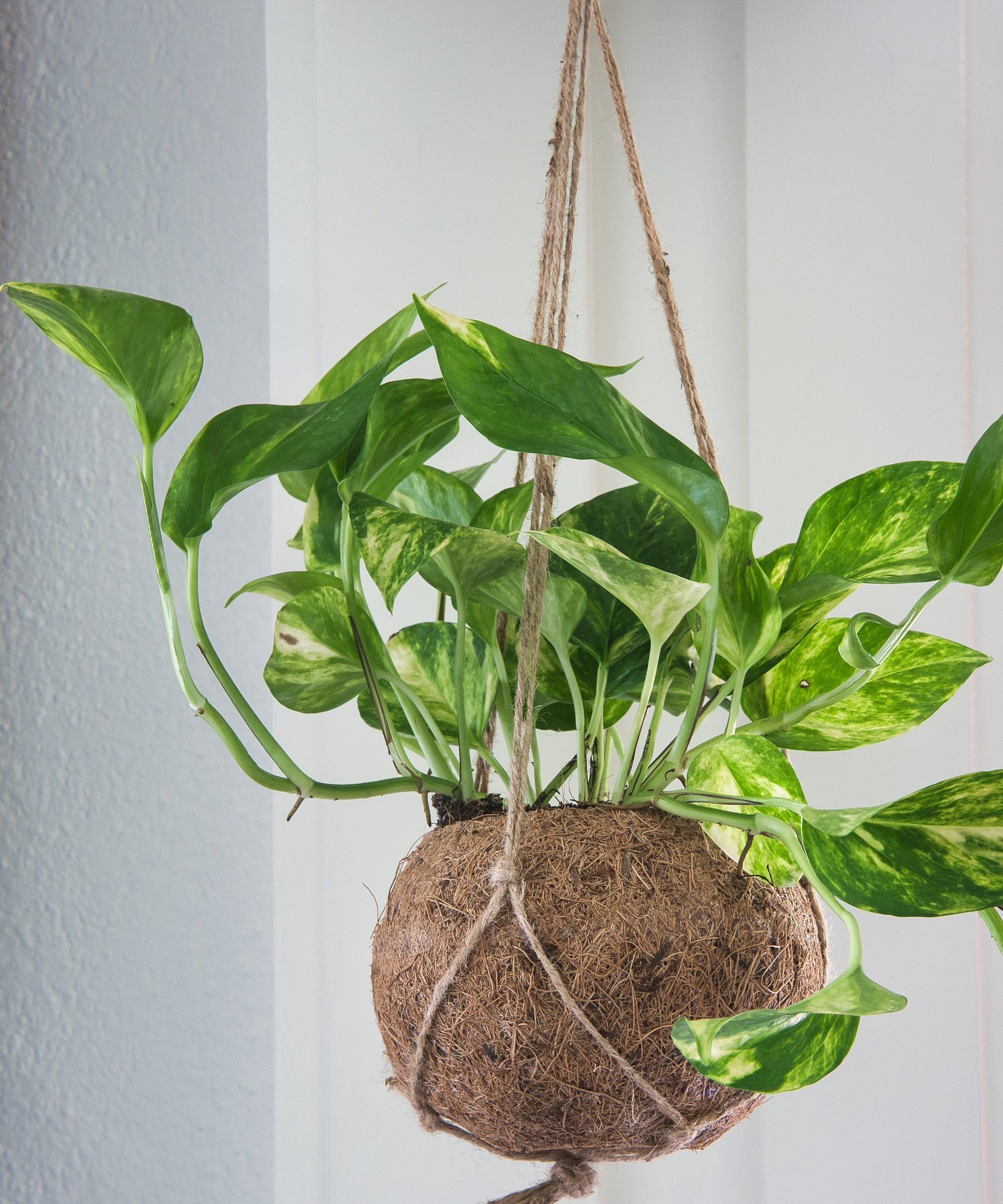
Much loved for its dangling stems of large heart-shaped leaves, the devil’s ivy is almost indestructible and one of the best easy indoor plants. Also known as pothos, choose from varieties with gold-splashed green leaves or white and green marbled foliage, such as ‘Marble Queen’.
Coping with most conditions, including deep shade, it is a good option if you're searching for the best indoor hanging plants that will survive in low light. Simply water when the top of the compost feels dry – reduce watering in winter to about once a month.
Apply a balanced liquid fertilizer every four weeks from spring to early autumn, and trim the long stems as required. You can also train this plant on horizontal wires to cover a wall.
If your pothos plant starts to show signs of wilting, houseplant expert and gardens writer Holly Crossley, says there are three key things to check.
'Check your watering regime, the temperature in the room where you pothos lives, and finally have a look for any pests on the plant. Pothos prefer a humid and warm environment of 70-90°F, as they are naturally topical plants. If they get too cold, they can quickly droop,' she says.

Holly is a former allotment keeper and professional gardener. She now spends her time tending to her many houseplants and writing about gardens and outdoor living for Homes & Gardens.
7. Rose grape (Medinilla magnifica)
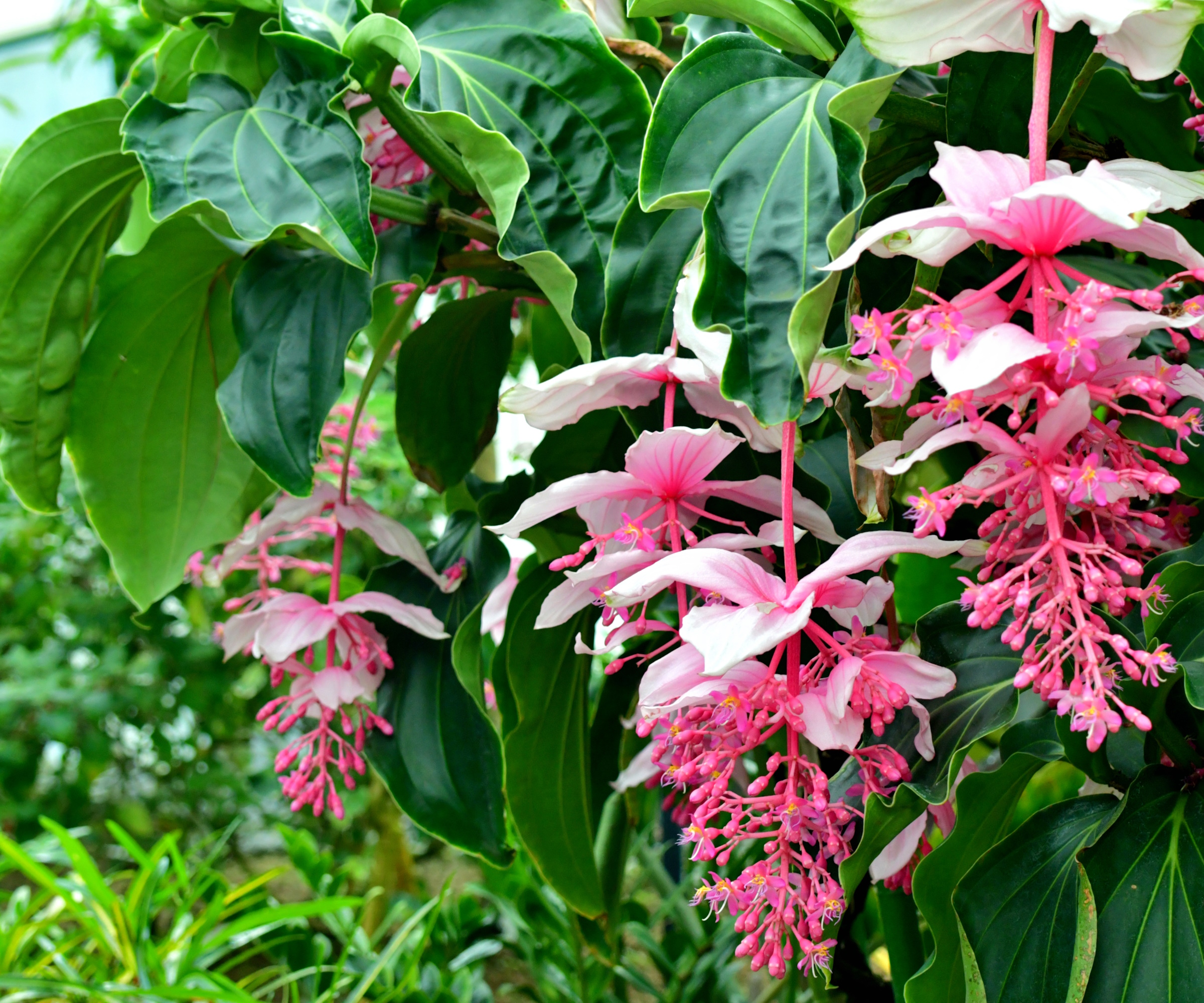
A guaranteed talking point, the glamorous rose grape makes a colorful feature from late spring to summer when its intricate pink and violet pendent blooms appear on arching stems. The large veined oval leaves provide interest for the rest of year.
This tropical plant is a bit of a prima donna and requires misting every couple of days and watering when the top of the compost dries out, ideally with rain or distilled water.
Apply a half strength high potash liquid feed, such as tomato fertilizer, every two weeks from spring to late summer. Rose grapes can reach up to 4x3ft (1.2x1m) in height and spread, and prefer a bright position out of direct sunlight.
8. Mistletoe cactus (Rhipsalis baccifera)
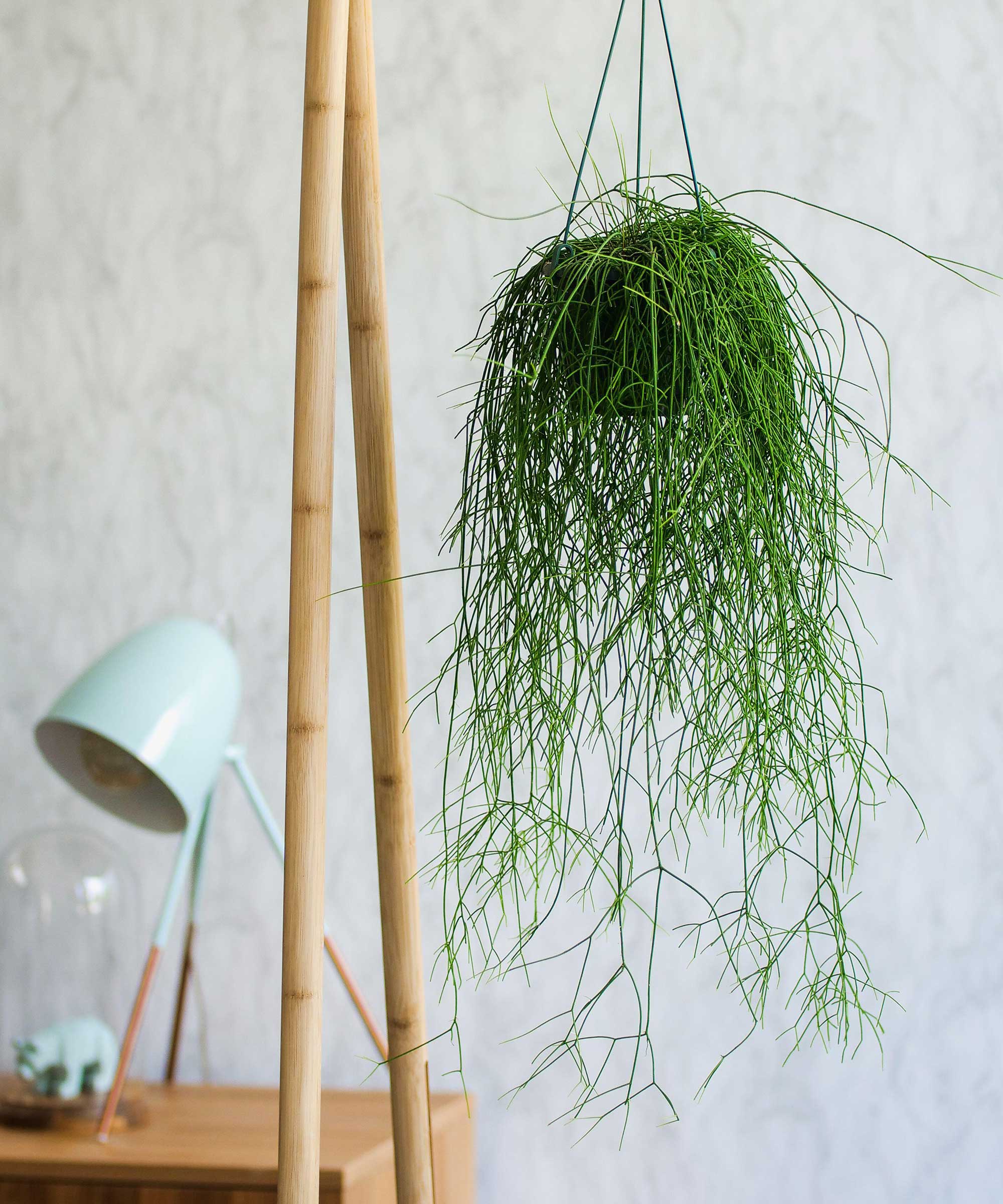
A tropical plant from the rainforests of South and Central America, the unusual mistletoe cactus produces a mass of thin sprawling leafless stems that can reach up to 3ft (90cm) in length, creating a dramatic statement in a hanging basket. It gets its name from the small white berries which resemble mistletoe and form on the stem tips in summer.
Grow it in a bright or lightly shaded position out of direct sun, and mist the stems every few days. Water well when the top of the compost feels dry and reduce watering frequency over winter. Apply a balanced liquid fertilizer once a month from spring to early fall. This could be grown as one of the best plants for bathrooms for a tropical look.
9. Donkey’s tail (Sedum burrito; Sedum morganianum)
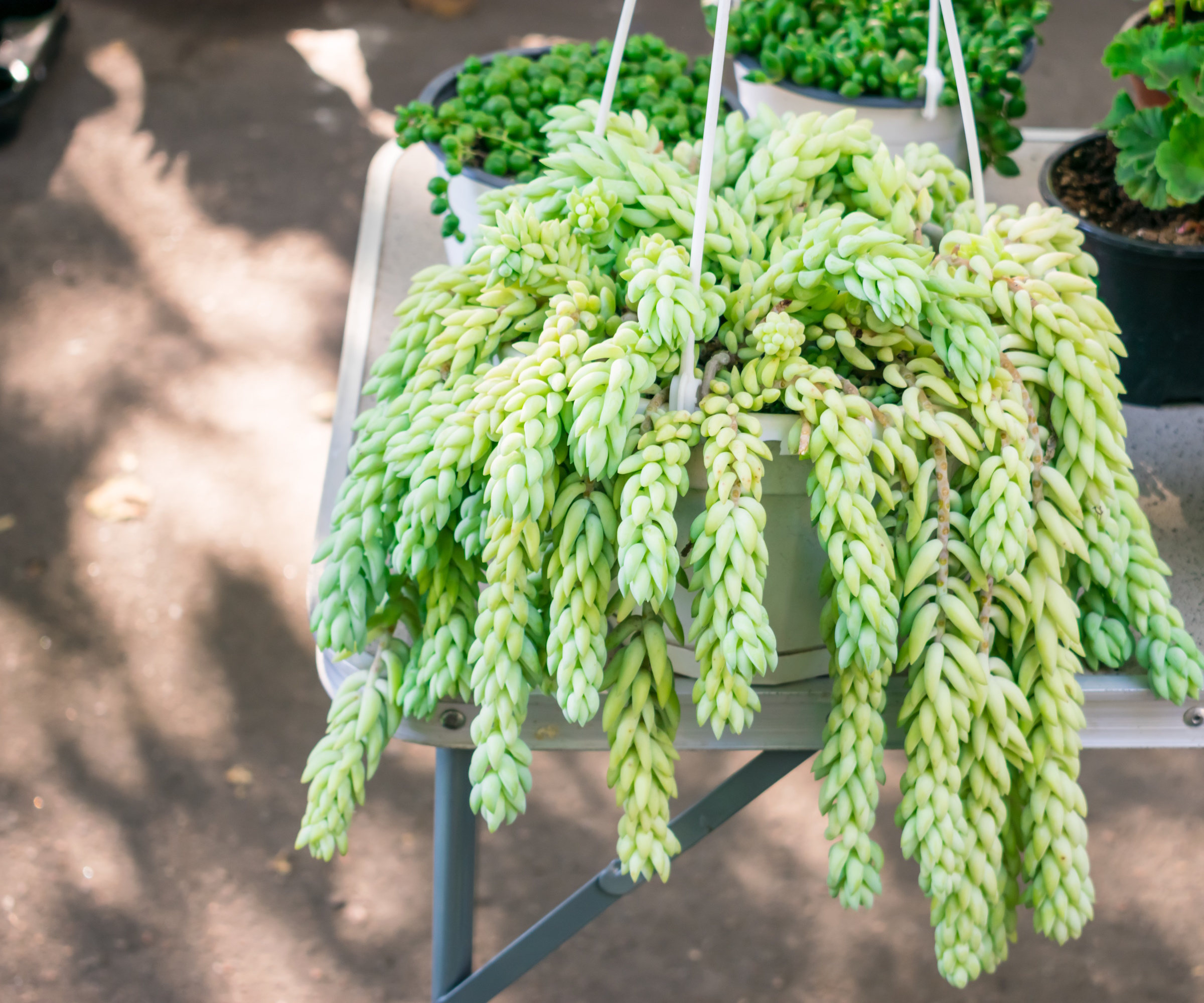
If you're learning how to grow succulents and want to add a trailing variety to your collection, this is a good one to try. It features chunky, textured stems, which reach about 12in (30cm) in length and comprise small, grey-green overlapping leaves.
Donkey’s tail may be sold as Sedum burrito or Sedum morganianum – the former has oval leaves while the latter has slightly longer, teardrop-shaped foliage, but both turn purplish-pink in strong sun. Small pink flowers also appear at the tips of the stems in summer.
Overwatering is one of the biggest houseplant mistakes. So hang it in a sunny position and water sparingly from spring to fall when the top of the compost feels dry; it only needs a tiny amount of water in winter. Feed with a half-strength cactus fertilizer every six weeks from spring to fall.
10. String-of-beads (Senecio rowleyanus)
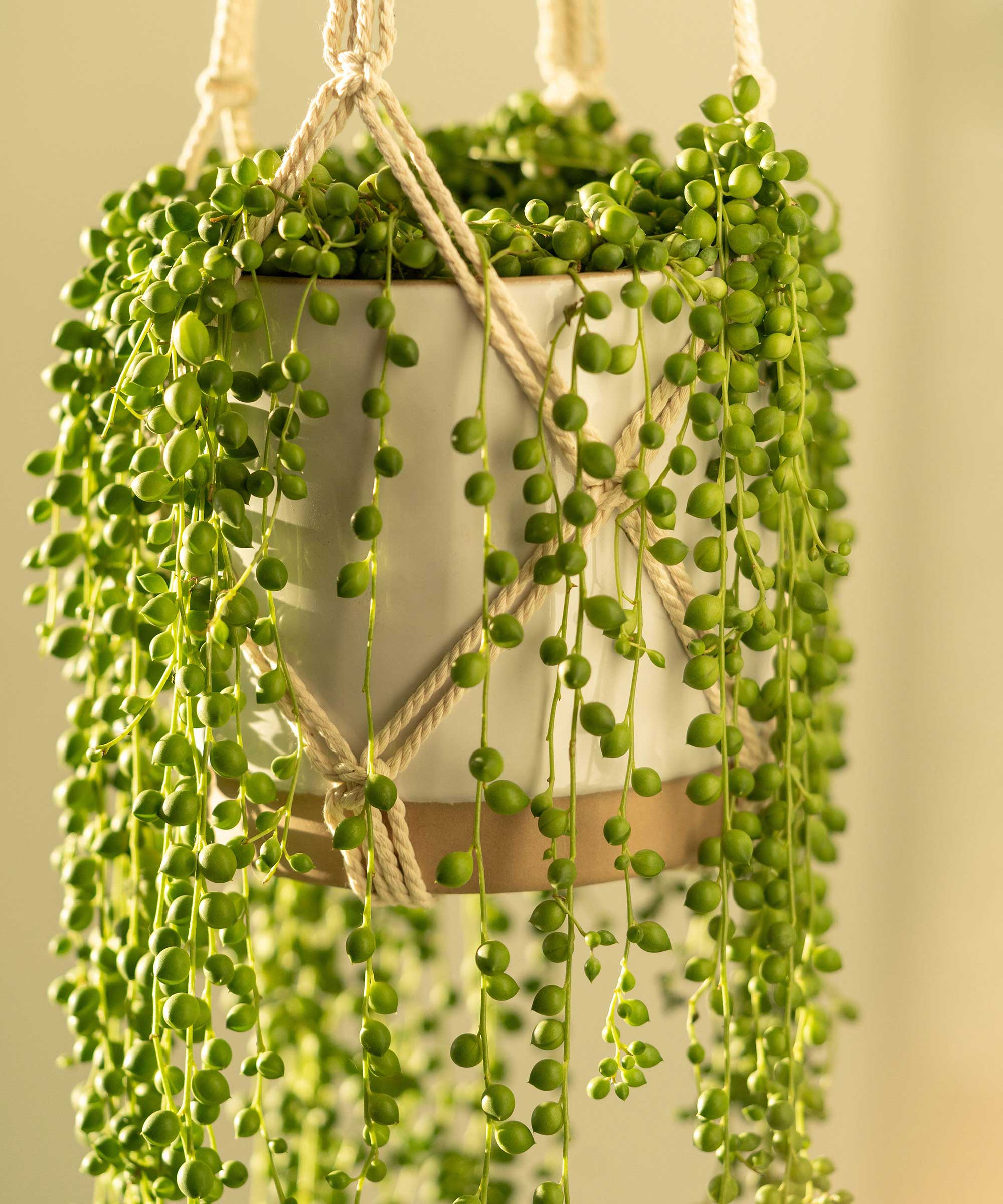
The little round leaves of this unusual plant look like green peas threaded on strings and creates a fascinating focal point when displayed in a hanging pot or basket. Also known as string of pearls, small white tubular flowers may also appear in spring. Despite its exotic appearance, this is an ideal plant for beginners, requiring very little water – the bead-like leaves retain moisture, allowing it to withstand long periods of drought.
Just place it in a sunny spot and in spring or summer trim the stems, which can grow to 36in (90cm) in length, to encourage denser growth. Also apply a half-strength balanced liquid fertilizer once or twice from spring to fall.
11. Christmas cactus (Schlumbergera)
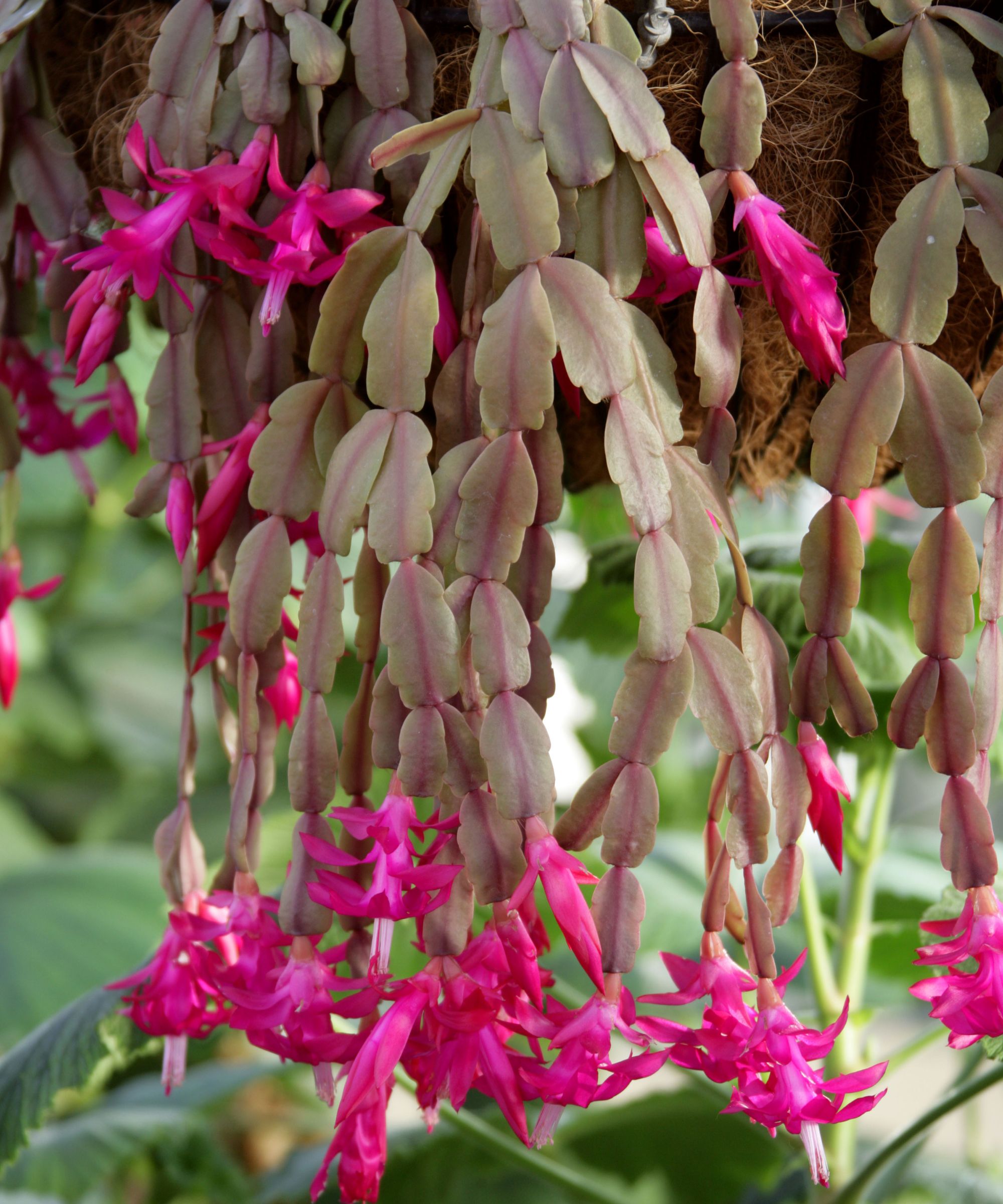
A striking option for the best indoor hanging plants, the exotic cactus hails from the rainforest rather than the desert. It's loved for its trailing stems, divided into oval segments, and jewel-like winter flowers.
The bright blooms may be red, pink, purple or orange, and look like Christmas lights dangling from the stem tips. This compact plant is ideal for small spaces, reaching just 18x18in (45x45cm) in height and length, and prefers light shade, away from direct sun.
Knowing how to grow a Christmas cactus is important because it is quite demanding and will need misting regularly and watering carefully. Irrigate well in summer to keep the compost damp, then reduce watering just before the flower buds appear in autumn, increasing moisture levels again as the buds open. Then allow the plant to almost dry out for a few months after it has flowered. Apply a balanced fertilizer once a month from spring to early fall.
12. Silver-inch Plant (Tradescantia zebrina)
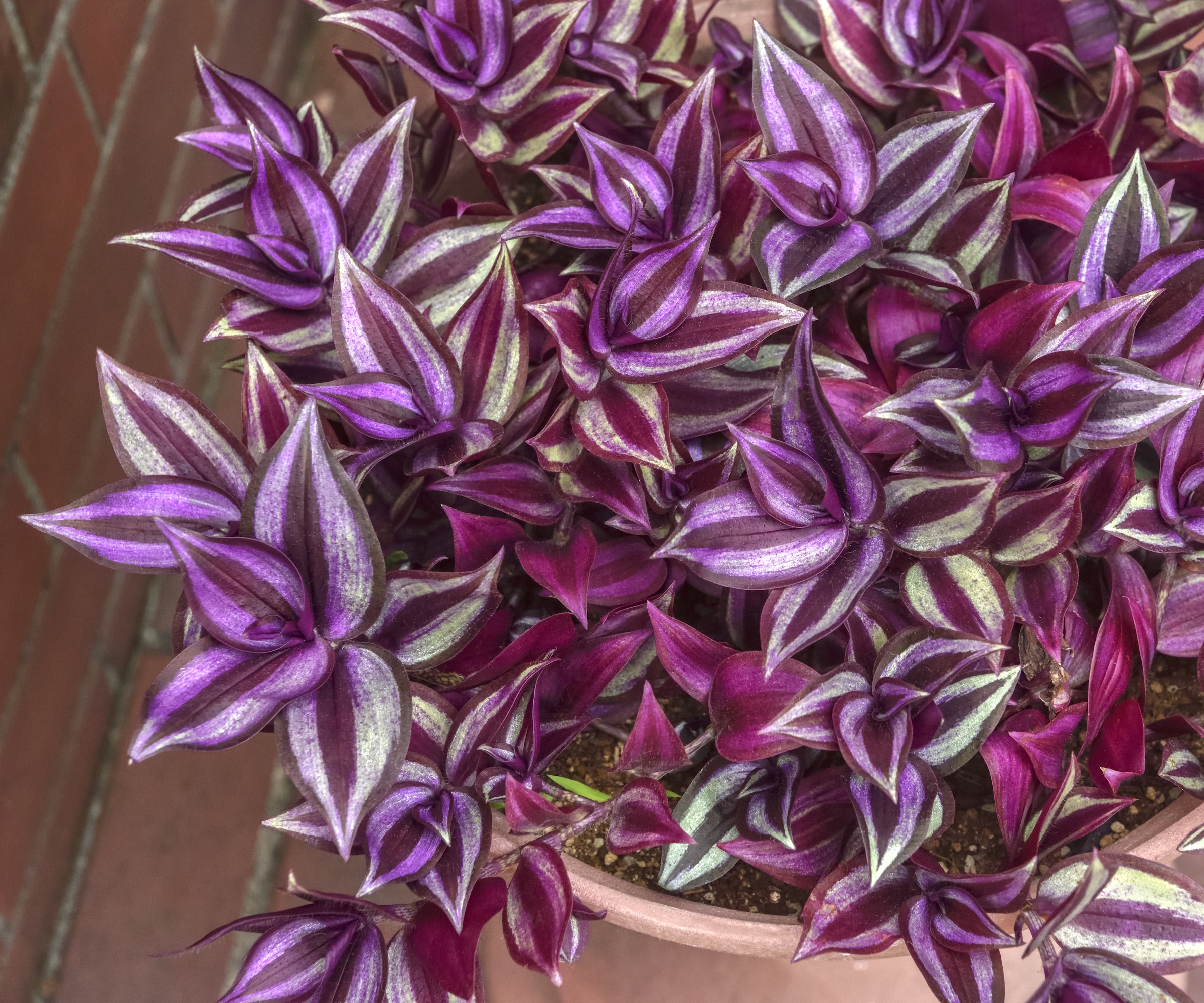
This trailing houseplant will add a colorful note to any bright room. Its stems of silver and green striped leaves, which are purple when young and remain purple on the undersides when mature, creating a dazzling curtain of color as they cascade from a hanging pot or basket. This pretty plant is easy to care for, sailing through periods of drought unscathed.
Just take care not to drown it, watering plants only when the top of the compost feels dry, and even less frequently in winter. Mist the leaves once a week in spring and summer, and apply a balanced liquid fertilizer every month to six weeks from spring to fall.
FAQs
How do I display hanging plants indoors?
You can use just one indoor hanging plant to make a statement in a room, or display a collection, perhaps hanging them at different heights from the ceiling or on staggered shelves to create a wall of foliage and flowers. It’s best to plant each variety of trailing houseplant in their own pot, rather than group a few together in one container – using identical pots will help to unify your display.
Separating the plants in this way allows you to provide each with the specific light levels, water and food they need, but if you do decide to combine some, check that they all have the same sun and moisture requirements. For example group low light plants together in a dim corner and those that like bright light by a window.
Choosing a container to match with your existing aesthetic will be key. Why not match your plants with a ceramic, clay or metal pot in a macrame holder? Or opt for a lined raffia basket for a more natural look.
How do I care for trailing houseplants?
Watering will be your main task when it comes to caring for the best indoor hanging plants, but take care to add the right amount and always water sparingly if you’re not sure how much to apply. This is because overwatering can quickly kill a plant, since soggy compost will cause the roots and stems to rot. To avoid this, plant in houseplant or cactus compost, depending on the species, in containers with drainage holes at the bottom, then slip these inside watertight hanging pots or baskets.
This two-pot system will allow you to take the plant out, water it over the sink, leave it to drain and then return it to its allocated position, minimizing the risk of waterlogging. Apply fertilizer at the recommended intervals when you are watering. Remember that watering levels will vary if you're caring for indoor plants in winter.
If this selection of trailing, cascading plants has inspired you to add a few new additions to your houseplant collection, make sure you keep them in the best of health by getting clued up on the most common houseplant pests and how to treat them.
Sign up to the Homes & Gardens newsletter
Design expertise in your inbox – from inspiring decorating ideas and beautiful celebrity homes to practical gardening advice and shopping round-ups.

Zia Allaway is a garden book author, editor, and journalist, and writes for a range of gardening and women’s magazines, including Easy Gardens, Homes & Gardens and Livingetc, as well as The Guardian and The Daily Telegraph newspapers. She has also written books for the Royal Horticultural Society and Dorling Kindersley publishers, including Eco-Gardening, Compost, Low Maintenance, Practical House Plant Book, Practical Cactus & Succulent Book, Indoor Edible Garden, What Plant Where, and the Encyclopedia of Plants and Flowers.
-
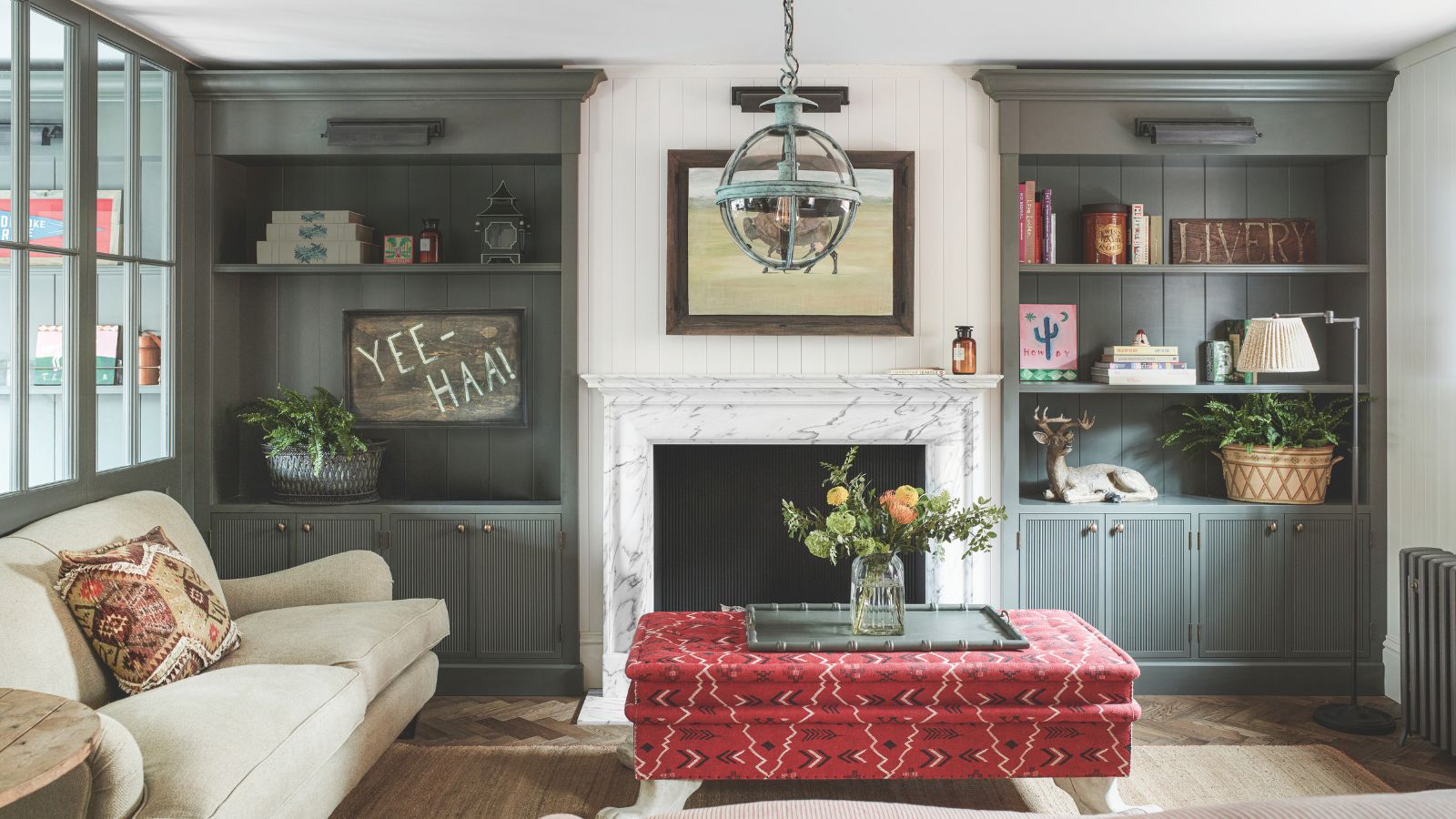 Easily harness the decluttering power of the Category Consolidation Approach – if you constantly try and fail to 'eat the elephant whole', experts say this one's for you
Easily harness the decluttering power of the Category Consolidation Approach – if you constantly try and fail to 'eat the elephant whole', experts say this one's for youTake the stress out of streamlining with this tried-and-tested method that home organizing pros love
By Andy van Terheyden
-
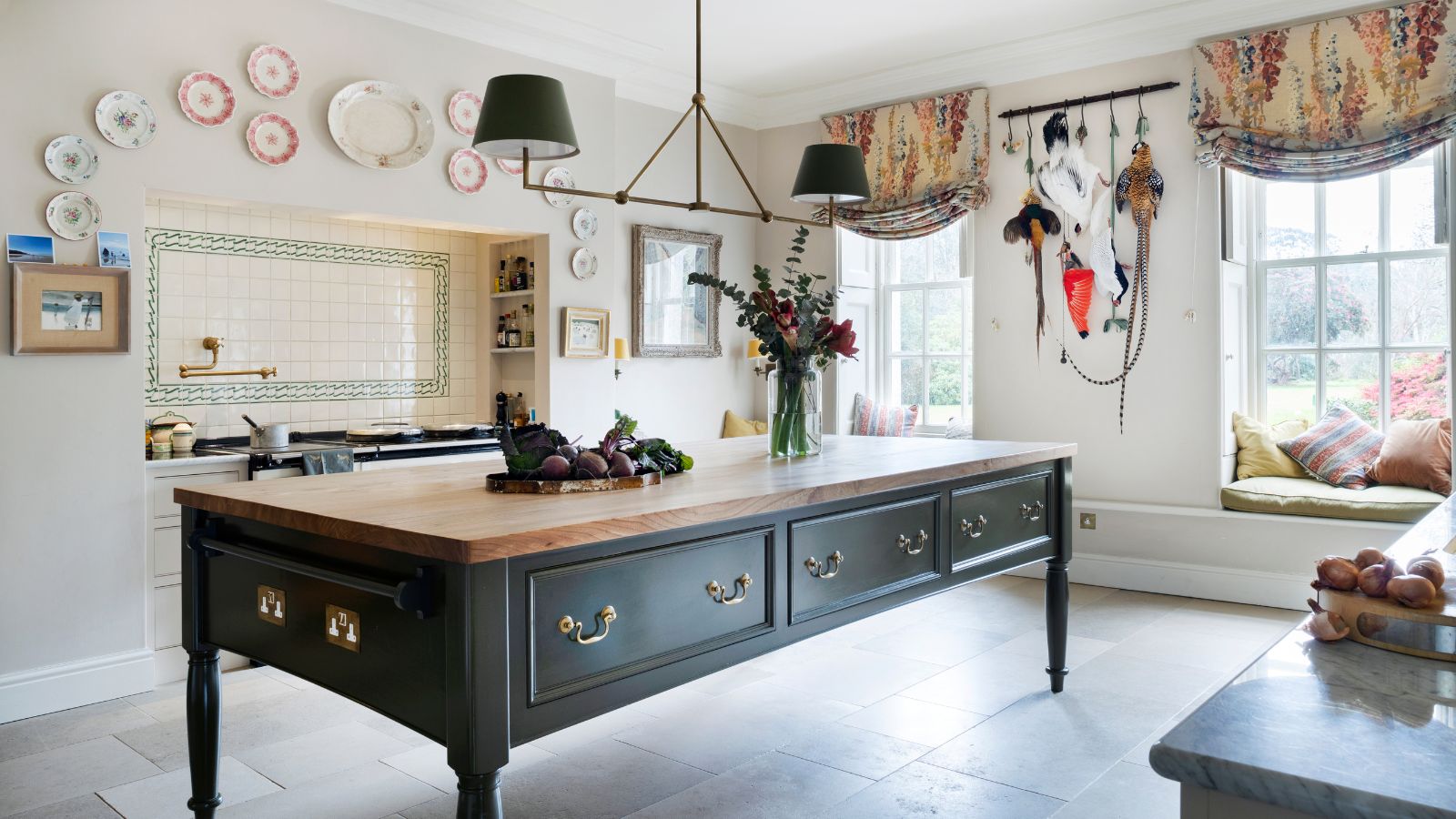 Step inside this British stately kitchen that's steeped in country charm – a kitchen built for now, with the soul of another era
Step inside this British stately kitchen that's steeped in country charm – a kitchen built for now, with the soul of another eraBritish kitchen designers Guild Anderson reimagined the layout of this characterful kitchen, crafting a bespoke kitchen design that honours the heritage and enduring charm of this historic Cornish home
By Caroline Moratti